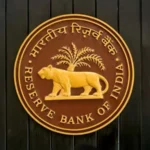
Delhi’s Air Quality Index (AQI) recorded a slight improvement, dropping by 46 points on Wednesday. Despite this, the air quality remained in the ‘very poor’ category, reflecting continued health risks for residents.
Key Highlights
- AQI Status
- The city’s average AQI stood at 303, as per the Central Pollution Control Board’s (CPCB) daily bulletin.
- Prominent Pollutants: PM 2.5 and PM 10 were the primary pollutants affecting the air quality.
- Worst-Affected Areas
- Shadipur: Recorded an AQI of 372 (highest in the city).
- Mundka: Followed closely with an AQI of 356.
- Notably, no area reached the ‘severe’ category (AQI > 400).
- Forecast
- According to the Indian Institute of Tropical Meteorology (IITM), air quality is expected to remain in the ‘very poor’ category through the end of November.
- Health Implications
- Air in the ‘very poor’ category poses risks of respiratory illnesses with prolonged exposure, particularly for individuals with existing pulmonary conditions.
Anti-Pollution Measures
- Graded Response Action Plan (GRAP): Restrictions under GRAP continue to mitigate pollution levels.
- Active Measures:
- Anti-smog guns are in operation to combat particulate matter.
- Additional steps are being undertaken by concerned departments to curb emissions.
Impact on Public Health
The prolonged exposure to ‘very poor’ air quality can significantly impact individuals with pre-existing health conditions, especially respiratory illnesses. Residents are advised to minimize outdoor activities, use protective gear like N95 masks, and ensure indoor air purification where possible.
With conditions expected to persist, immediate and long-term pollution control strategies remain critical for safeguarding public health.




































Leave a Reply